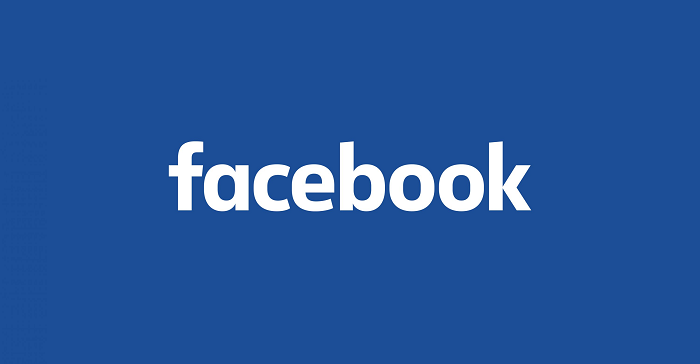SOCIAL
Planning for 2023: Facebook Posting Tips

Looking to refine your social media marketing process in 2023?
Over the first few weeks of the year, we’re publishing a series of tips and notes on how to maximize your efforts, including pointers on new tools like ChatGPT and DALL-E, and how these evolving apps can assist in your content planning process.
We’ve already covered the following elements:
So, with knowledge of what you’re going to create and share, we now move onto the next element – platform-specific tips to help you maximize your in-app efforts.
And we start with the big blue app, the one that started it all (kind of)…
Posting tips for Facebook
Facebook may no longer be the cool app, or the place to hangout for younger users, but it remains the most accessed social media platform in the world, and it continues to add more users, as it expands into ever more markets.
Everyone checks into Facebook, because it’s where you’re connected to your closest friends and family, and you don’t want to miss out on a birthday notification or some other major milestone that’s announced via Facebook post.
That’s a big part of why almost 2 billion people still log into Facebook every day, and once they’re there, they are still spending time looking around, engaging in groups, sharing posts, etc.
Younger users might spend more time scrolling through TikTok, but Facebook remains a critical consideration for most brands.
With that in mind, what are the key best practices for Facebook in 2023 for a brand looking to optimize its in-app presence?
The Algorithm
The first thing you need to understand is the News Feed algorithm, and how it amplifies content in the app.
Facebook’s News Feed algorithm, which aims to optimize use engagement, is underpinned by three key elements:
- Where the post comes from – The algorithm takes into account how often a user engages with a profile or person, as a means to determine likely interest. So if you regularly Like or comment on posts from a Page, you’ll see more of its posts – while if someone you regularly interact with shares a link, you’ll also be more likely to see it. That means that the more people engage with your Page content, the more likely they’ll be served more of it, as they’ve registered an interest in your updates.
- When it was posted – Timeliness remains a factor in Facebook’s News Feed, which also means that initial post response plays a role in determining reach. As such, you need to grab attention among the people who initially see it – which is why you need to understand when your audience is online (through your analytics) and what they’re likely to engage with.
- How likely that it’ll drive engagement – Facebook’s algorithm also works to determine what each users’ engagement habits are, and will optimize to best lean into their specific behaviors. As per Facebook: “For any given story, we predict how likely you might be to comment on that story, or to share that story”. Facebook will also estimate how long it thinks users might watch a video for, or read an article, as further indicators of likely engagement.
The News Feed algorithm is always being updated and evolving, and Facebook’s big focus of late has been highlighting more relevant video updates, from all across the app, in user feeds. Meta has said that it will continue to add more of these AI-based recommendations over time, and as its algorithm improves, it is getting better at highlighting relevant content to each user that they otherwise would not have seen.
That could help to improve your reach, but it’s worth noting that the focus is short video clips, as Meta looks to hook into broader consumption behaviors. If you have ideas for short-form clips, that could be a good opportunity to get more reach in the app.
Recent reports have also shown that Meta has been trying to reduce the amount of divisive political content in user feeds. Which is good for marketers, as it leaves more room to get more exposure for your content, while Meta also notes that Facebook’s algorithm is increasingly being geared towards providing what users say that they ‘value’, as opposed to what makes them engage.
That’s an important distinction. Divisive, attention-grabbing posts spark engagement, but if users are indicating to Meta that they’d prefer more ‘valuable’ experiences, the algorithm could be further aligned with, say, shares over comments, depending on how Meta defines this.
There’s no specific info on which metrics Meta’s taking into account when it refers to ‘value’, but it’s another consideration for your planning.
In terms of content that has resonated on Facebook in the past, and may relate to this new ‘value’ based approach, a 2019 analysis by Buffer, which analyzed more than 777 million Facebook posts from Pages, found that the posts which saw the most engagement, and subsequent reach, were either inspirational, funny, or practical.
All of these seem to point to valuable experiences, which is something to keep in mind in your planning.
Posting Best Practices
As has been highlighted by various studies, shorter text descriptions generally work better on Facebook, with the optimal length for a Facebook post being between 25 to 55 characters.
Which is not a lot – but you’re often trying to guide users towards clicking on an attachment anyway, so you don’t want to be distracting them a long, wordy post.
Having trouble summarizing your posts? You can ask ChatGPT to do it for you.
This is the result of me asking ChatGPT to summarize this post, and the summary here is pretty accurate.
It might not always be exactly what you want, and you can run it a few times, with additional emphasis notes on the style or language (casual, simple, etc.), which could help you find a good summary for Facebook.
Maybe it helps – worth trying either way.
Also worth noting here that posts of more than 80 characters are auto-truncated in the mobile app, which gives you that ‘See more’ prompt at the end of the initial text. That could reduce click-throughs if your key info is not in the first sentence/s.
In terms of formats, video is the best-performing post type, with live video driving the most engagement, while posts with images generally perform better than those with straight text. We’ve also seen some success with memes to help improve reach and awareness.
And again, with Meta putting more emphasis on short-form content, that’s where you should be looking, and it’s seemingly always adding new tools to simplify Reels creation, even if you don’t have video assets.
You can also check in with the Facebook Ads Library to see what your competitors and those in your niche are doing. If the ad’s been running for some time, it’s likely working, while you can also get spend and impression data on previous campaigns.

Also worth noting here – when you add a link into the Facebook post composer, it will automatically generate a link preview, using the header image you’ve added to your post on your site. You can then delete the link from the text, and the preview will remain, which can be better for driving traffic (as your whole image is now clickable).
In terms of hashtags, the jury is still out on Facebook hashtag effectiveness.
At different times, Facebook has put more emphasis on hashtags, but none of those pushes has seemingly stuck.
It may be worth experimenting – I would suggest that you add no more than two hashtags per Facebook post, and that you research relevant tags within the app itself (i.e. run a search and see what comes up, to ensure that it’s relevant to your business/products).
Finally, on posting frequency. This really depends on your audience, but Facebook has previously advised that Pages shouldn’t be overly concerned about over-posting, as the News Feed algorithm will limit exposure from individual Pages.
That’s not guaranteed, and you could still annoy those who’ve chosen to specifically follow your Page. But as a guide, there’s no definitive impact to posting more often.
As a start, I’d be aiming for three updates per week, moving up to five, then measure performance and iterate from there.
In terms of when to post, data from Sprout Social, shared last year, indicates that the best times to post to Facebook are Mondays through Fridays at 3 am, and Tuesdays at 10 am and noon, in your local time.

Why 3am? Well, there’s likely a lot less competition at that time, and it could be that by posting in these down times, that could help you get that initial engagement spark that you need to reach more people throughout the day.
But again, these measures are all relative, and it may be that your audience responds to wholly different times and updates – these reports are meant as initial guides to help you map out your best starting point.
Engagement Process
It’s important that you monitor your post comments, and respond to users when you can.
Establishing that connection can play a big role in building brand recognition and community, while comments also register in the News Feed algorithm as engagement, which could help to boost post reach.
You could also consider opening up a Facebook group for your brand, or joining relevant groups so you can tune into related chatter, while guiding more conversations towards DMs is another way to help enhance that interaction and facilitate relationships.
Again, these notes are designed as pointers, not definitive ‘rules’, and you may well find that your audience responds to the opposite of everything recommended here.
But that’s the key driver – make sure that you analyze your analytics, and track your performance over time. Whether you’re driving more clicks, or getting more reach, keep tabs on the stats that matter to your business – and when you hit a winner, double-down, and test your theories as to why it worked.
SOCIAL
Snapchat Explores New Messaging Retention Feature: A Game-Changer or Risky Move?

In a recent announcement, Snapchat revealed a groundbreaking update that challenges its traditional design ethos. The platform is experimenting with an option that allows users to defy the 24-hour auto-delete rule, a feature synonymous with Snapchat’s ephemeral messaging model.
The proposed change aims to introduce a “Never delete” option in messaging retention settings, aligning Snapchat more closely with conventional messaging apps. While this move may blur Snapchat’s distinctive selling point, Snap appears convinced of its necessity.
According to Snap, the decision stems from user feedback and a commitment to innovation based on user needs. The company aims to provide greater flexibility and control over conversations, catering to the preferences of its community.
Currently undergoing trials in select markets, the new feature empowers users to adjust retention settings on a conversation-by-conversation basis. Flexibility remains paramount, with participants able to modify settings within chats and receive in-chat notifications to ensure transparency.
Snapchat underscores that the default auto-delete feature will persist, reinforcing its design philosophy centered on ephemerality. However, with the app gaining traction as a primary messaging platform, the option offers users a means to preserve longer chat histories.
The update marks a pivotal moment for Snapchat, renowned for its disappearing message premise, especially popular among younger demographics. Retaining this focus has been pivotal to Snapchat’s identity, but the shift suggests a broader strategy aimed at diversifying its user base.
This strategy may appeal particularly to older demographics, potentially extending Snapchat’s relevance as users age. By emulating features of conventional messaging platforms, Snapchat seeks to enhance its appeal and broaden its reach.
Yet, the introduction of message retention poses questions about Snapchat’s uniqueness. While addressing user demands, the risk of diluting Snapchat’s distinctiveness looms large.
As Snapchat ventures into uncharted territory, the outcome of this experiment remains uncertain. Will message retention propel Snapchat to new heights, or will it compromise the platform’s uniqueness?
Only time will tell.
SOCIAL
Catering to specific audience boosts your business, says accountant turned coach

While it is tempting to try to appeal to a broad audience, the founder of alcohol-free coaching service Just the Tonic, Sandra Parker, believes the best thing you can do for your business is focus on your niche. Here’s how she did just that.
When running a business, reaching out to as many clients as possible can be tempting. But it also risks making your marketing “too generic,” warns Sandra Parker, the founder of Just The Tonic Coaching.
“From the very start of my business, I knew exactly who I could help and who I couldn’t,” Parker told My Biggest Lessons.
Parker struggled with alcohol dependence as a young professional. Today, her business targets high-achieving individuals who face challenges similar to those she had early in her career.
“I understand their frustrations, I understand their fears, and I understand their coping mechanisms and the stories they’re telling themselves,” Parker said. “Because of that, I’m able to market very effectively, to speak in a language that they understand, and am able to reach them.”Â
“I believe that it’s really important that you know exactly who your customer or your client is, and you target them, and you resist the temptation to make your marketing too generic to try and reach everyone,” she explained.
“If you speak specifically to your target clients, you will reach them, and I believe that’s the way that you’re going to be more successful.
Watch the video for more of Sandra Parker’s biggest lessons.
SOCIAL
Instagram Tests Live-Stream Games to Enhance Engagement

Instagram’s testing out some new options to help spice up your live-streams in the app, with some live broadcasters now able to select a game that they can play with viewers in-stream.
As you can see in these example screens, posted by Ahmed Ghanem, some creators now have the option to play either “This or That”, a question and answer prompt that you can share with your viewers, or “Trivia”, to generate more engagement within your IG live-streams.
That could be a simple way to spark more conversation and interaction, which could then lead into further engagement opportunities from your live audience.
Meta’s been exploring more ways to make live-streaming a bigger consideration for IG creators, with a view to live-streams potentially catching on with more users.
That includes the gradual expansion of its “Stars” live-stream donation program, giving more creators in more regions a means to accept donations from live-stream viewers, while back in December, Instagram also added some new options to make it easier to go live using third-party tools via desktop PCs.
Live streaming has been a major shift in China, where shopping live-streams, in particular, have led to massive opportunities for streaming platforms. They haven’t caught on in the same way in Western regions, but as TikTok and YouTube look to push live-stream adoption, there is still a chance that they will become a much bigger element in future.
Which is why IG is also trying to stay in touch, and add more ways for its creators to engage via streams. Live-stream games is another element within this, which could make this a better community-building, and potentially sales-driving option.
We’ve asked Instagram for more information on this test, and we’ll update this post if/when we hear back.
-

 SEARCHENGINES7 days ago
SEARCHENGINES7 days agoGoogle Core Update Volatility, Helpful Content Update Gone, Dangerous Google Search Results & Google Ads Confusion
-

 SEO7 days ago
SEO7 days ago10 Paid Search & PPC Planning Best Practices
-

 MARKETING5 days ago
MARKETING5 days ago5 Psychological Tactics to Write Better Emails
-

 SEARCHENGINES6 days ago
SEARCHENGINES6 days agoWeekend Google Core Ranking Volatility
-

 MARKETING6 days ago
MARKETING6 days agoThe power of program management in martech
-

 SEO6 days ago
SEO6 days agoWordPress Releases A Performance Plugin For “Near-Instant Load Times”
-

 PPC5 days ago
PPC5 days ago20 Neuromarketing Techniques & Triggers for Better-Converting Copy
-
SEARCHENGINES5 days ago
Daily Search Forum Recap: April 15, 2024














You must be logged in to post a comment Login